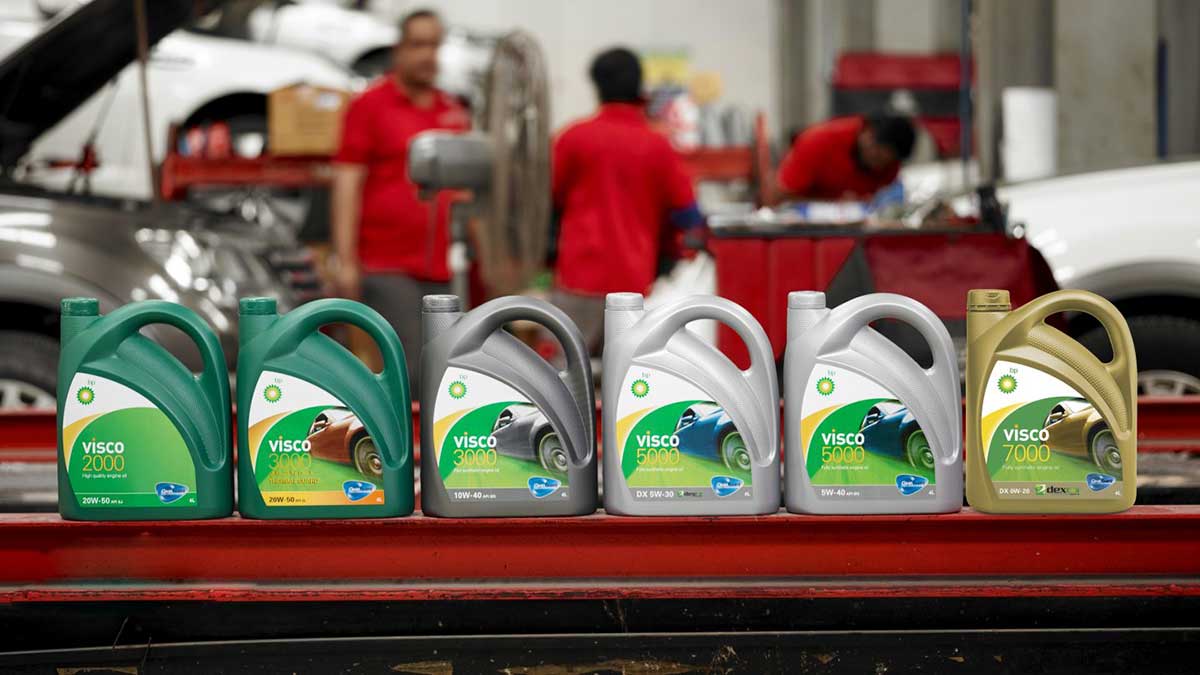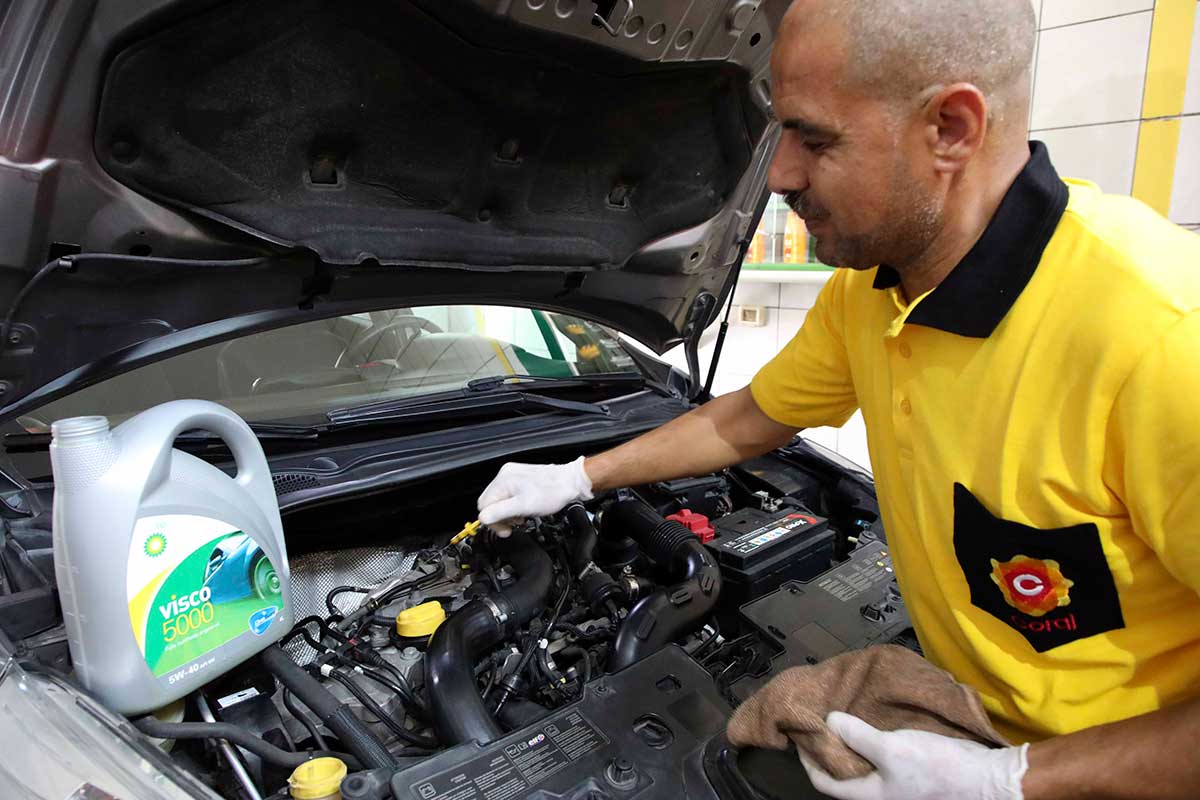For most of us, the second-most-expensive big-ticket purchase after a home is typically our car. Mobility affords us the freedom to go where we want when we want, but more importantly it’s essential for commuting to work, taking the kids to school, going grocery shopping and an endless array of other errands. Without a car, especially one that’s well maintained, we would be hard-pressed to get anything done.
The beating heart of the car is the engine, and it is absolutely crucial that we do our best to keep that engine as efficient and well-preserved as possible. Not only will doing so greatly extend its longevity, but it will reduce fuel consumption and costs, cut down on emissions and improve performance.
Irrespective of whether you are familiar with the inner workings of an engine, it’s sufficient to know that there are a lot of moving parts within, which grind against one another during their operating cycles, resulting in heat and friction, which translates to resistance. That’s where lubricants play a vital role.
Lubricating oil, such as those in the BP Visco range of lubricants and other essential fluids, creates a separating film between surfaces of adjacent moving parts to minimize direct contact between them, decreasing frictional heat and reducing wear, carrying heat away from moving parts and, most importantly, preventing damage and protecting the engine
In addition, lubricants contain dispersants, detergents and oxidation inhibitors that not only clean the engine from sludge but also neutralize oxidation and acids originating from fuel, all while inhibiting corrosion of engine parts and improving the sealing of piston rings. BP Visco lubricants with CleanGuard™ engine protection technology keeps your engine cleaner for longer. Your car runs better if the engine is kept clean. CleanGuard™ technology keeps your engine clean by preventing dirt such as carbon and sludge from sticking to sensitive engine parts and the vital oil ways. CleanGuard™ technology slows down the formation of carbon and sludge and wraps up dirt so that it doesn’t stick to the engine.
Nonetheless, we are still dealing with numerous metal parts all moving at extremely high speeds and at high temperatures, and over time these parts grinding against one another will release microscopic metallic particles into the oil. If left in the oil, these particles grind against moving parts and cause further damage, not to mention clogging up the intricate network of journals and galleries through which oil travels to lubricate every component inside the engine. For this reason, replaceable oil filters are integrated into the lubrication circuit to capture those particles while allowing the oil to continue on its way.
However, environmental conditions can have as much of an effect on lubricants as the internal workings of the engine. Depending on whether you live in a warm or cold climate, engine oil temperature will vary, as will its thickness, which is an essential factor in the ability of the lubricant to travel through the engine’s passageways and carry out its function as a lubricating agent for the internal moving parts.
The type of car engine also matters due to how much it will demand from the lubricant, depending on whether it’s a sophisticated engine powering a performance car that is also prone to generating high temperatures, or a more modest engine in an economical compact.
For these reasons, it is vital that you choose a grade of lubricant that is suitable for your car’s engine. In gasoline engines, the motor oil can be exposed to very high temperatures, which can thin the lubricant. This is where viscosity comes in. Motor oils with higher viscosity indices thin less at these higher temperatures. However, while the viscosity must be high enough to maintain a lubricating film, it also needs to be sufficiently low for the oil to flow around the engine parts under all conditions. The viscosity index is a measure of how much the oil’s viscosity changes as temperature changes. In other words, the higher viscosity index, the less change at higher temperatures.

The grades include single grades, such as SAE 30, and also multi-grades such as SAE 15W-30. A multi-grade consists of a winter grade specifying the viscosity at cold temperatures and a non-winter grade specifying the viscosity at operating temperatures.
We’ve all noticed designations like 5W30, 5W40 or 10W40 on engine lubricant containers. But let’s talk about what they signify. These figures represent the viscosity grade of the engine oil, meaning its level of fluidity and efficiency at low and high temperatures.
Monograde oils
Monograde oils are generally designed for older vehicles as they are used over a relatively small temperature range. There are two categories of such lubricants, depending on the time of year when the vehicle is operated.
In warmer months, a lubricant with a high viscosity grade that is not marked “W” is recommended, such as SAE 8, 12, 16, 20, 30, 40, 50 or 60 etc. A higher viscosity grade oil will protect and seal your engine in warmer months, but comes at the expense of better lubrication and the fuel-saving features of lower-grade oils.
Multigrade oils
Multigrade oils are ideal for contemporary vehicles models, and quite popular. Being less susceptible to temperature shifts than monograde oils, they have the benefit of performing their function effectively no matter the temperature.
Multigrade lubricant designations feature a “W” with a number on either side, like 0W30. The “W,” which means Winter, indicates the oil can handle seasonal temperature changes. The number preceding the “W” signifies the winter viscosity grade. The lower that number, the easier it is for the engine to start cold, meaning that a more fluid oil is best for a faster start-up.
On the other hand, the value after the “W” represents the viscosity grade of the lubricant at high temperatures. A higher grade provides optimal protection and engine sealing, due to the formation of a thick film of oil in the engine’s hotter and more critical areas. A lower number, on the other hand, is better for reducing friction and improving fuel consumption.
• Oil with a low viscosity grade is best at low temperatures because it makes it easier for the lubricant to circulate in your engine during a cold engine start.
• A higher viscosity grade lubricant will be more resilient in the hotter, more critical parts of the engine. Being thicker, the oil will form a protective layer on the engine components, reducing by preventing friction.
However, the oil’s exposure to products of internal combustion, microscopic coke particles from black soot and metallic particles from the wearing of the surfaces, combined with thermal and mechanical degradation, which reduces the viscosity, means the oil and filter need to be replaced periodically.
Oil changes are usually carried out based on the time in service or the distance the vehicle has traveled. These are rough indications of the real factors that control when an oil change is appropriate, such as how long the oil has been run at high temperatures and how many heating cycles the engine has seen.
Oil does not degrade significantly just sitting in a cold engine, but if a car is driven only for short distances, the oil will not fully heat up and will accumulate contaminants such as water because of insufficient heat to boil it off. Oil in this condition can cause problems.
At Coral, our expert technicians will be more than happy to advise you on which grade of oil is best suited for your vehicle. Alternatively, you can take a look at our Products page to explore the various BP Visco offerings we have available, or take a look at our Services page if you wish to have us replace the oil in your vehicle.





